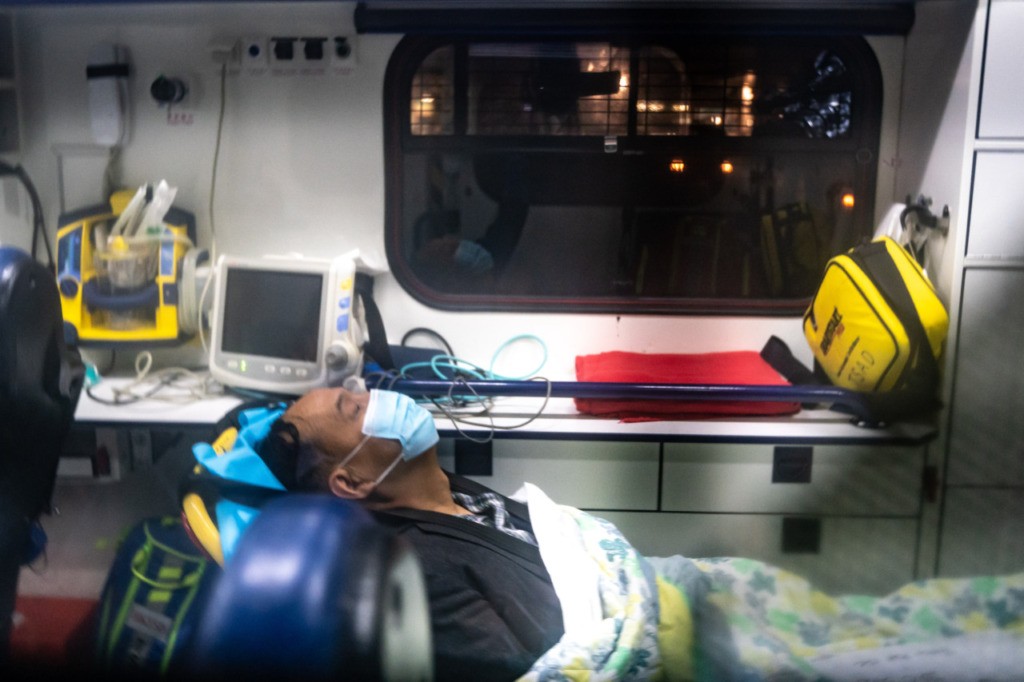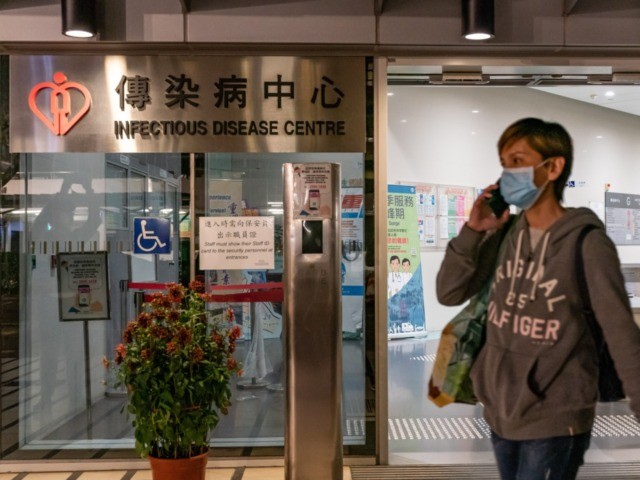Hong Kong confirmed its first case of a mystery coronavirus originating in Wuhan, China, on Wednesday after weeks of expanding its power to isolate potential patients and amid warning the virus could evolve to be deadlier.
Chinese officials identified the virus as part of the coronavirus family on Monday and began sharing the genome internationally, allowing officials around the world to test potential patients to see if they are carriers. Officials have confirmed cases in the United States, Taiwan, Macau, Japan, South Korea, and Thailand, and neighboring countries like the Philippines have identified potential cases.
The new virus triggers respiratory disease symptoms in carriers and eventually leads to pneumonia. China’s public health officials have confirmed 481 cases since they identified the cases; nine people have died after being diagnosed.
The virus appears to have originated in December in Wuhan, a city of 11 million people in central China; the greater Wuhan area is home to 19 million people. Communist Party spokespersons have said they are investigating a popular seafood market and believe the virus originated in animal meat, but do not know which animal and have not traced the virus back to any specific source, meaning it is possible individuals in Wuhan could contract the virus from that animal source and not just from human-to-human contact.
Chinese officials confirmed on Tuesday that the virus can jump from person to person and that several confirmed patients are health workers who treated infected people.

A patient is transferred by an ambulance to the Infectious Disease Centre of Princess Margaret Hospital on January 22, 2020 in Hong Kong, China. Hong Kong reported its first two cases of Wuhan coronavirus infections as the number of those who have died from the virus in China climbed to 17 on Wednesday and cases have been reported in other countries including the United States,Thailand, Japan, Taiwan, and South Korea. (Anthony Kwan/Getty Images)
Hong Kong Health Secretary Sophia Chan confirmed on Wednesday that the patient “highly suspected” of having the new virus was a 39-year-old man who arrived in the city late Tuesday and went through screening. The man, whose name authorities have not revealed, traveled via train from Wuhan and stopped in Shenzhen, a Chinese city on the other side of the border with Hong Kong. The man denied visiting the seafood market that Chinese officials believe is ground zero for the virus.
Chan stopped short of confirming that the man had the virus, according to RTHK, because the completion of extended testing would have to wait until Thursday, but authorities are proceeding under the assumption that the test will come back positive as preliminary tests identified the virus in question.
The man arrived in the city with four family members, none of whom have run the telltale fever or shown other symptoms of respiratory infection at the time of the press conference. The family spent only one night in Hong Kong before proceeding to Manila; Hong Kong authorities told reporters they have alerted the Philippines to test the family upon their arrival.
“Asked why the family were not quarantined, the Director of Health, Constance Chan, said they had already left by the time preliminary test results for the man became available,” Hong Kong broadcaster RTHK noted.
Chinese officials have insisted they know little about how the virus spreads, leading to concerns about the rail car that the Hong Kong passenger sat in. Sophia Chan told reporters that the government dispatched crews to disinfect the terminal where he waited. The train itself has returned to China, but Hong Kong officials said they requested that Chinese cleaning crews disinfect it.
As of noon local time on Wednesday, Hong Kong officials said in a press statement that they had identified 18 potential carriers of the virus, isolated them, and begun the testing process to identify their illness. The 18 join another 27 in isolation waiting for confirmation.
Hong Kong’s government acted rapidly in response to the virus, which reports estimate to have first infected a person in December 2019. While Chinese officials confirmed the identity of the virus this week, Hong Kong Chief Executive expanded the city’s quarantine powers in early January in anticipation of Wuhan travelers bringing the virus to the country. At the time, Hong Kong had identified 30 cases of pneumonia that could potentially be caused by the Wuhan virus, ultimately failing to link those cases to the coronavirus until Tuesday. The new provisions allow Hong Kong authorities to isolate anyone suspected of carrying the virus.
During the press conference Wednesday, Sophia Chan noted that officials would convert two holiday camps into quarantine centers to isolate suspected patients. Hong Kong is preparing for Lunar New Year festivities on Saturday, one of Asia’s biggest travel days of the year which locals often celebrate with pop-up markets and camps.
The large crowds expected for Lunar New Year combined with Hong Kong’s ongoing anti-communist protest movement greatly expand the potential for the virus to spread, as both involve large public assemblies. The Hong Kong government’s attempts to limit protests and public displays of dissidence have largely failed – one notable example is the government attempting to shut down protest displays at Lunar New Year markets, which has triggered the establishment of more popular independent markets with protest-themed gifts on sale. The Hong Kong government also canceled its annual Lunar New Year parade in November in anticipation of protests, which also did little to keep people at home.
Protesters began organizing in June 2019 in response to a proposed law that would have allowed China to extradite anyone present in Hong Kong into its prison system, notorious for its rampant human rights violations. While Hong Kong lawmakers withdrew the extradition bill, protesters are still making four demands: the right to directly elect lawmakers to prevent a similar situation from happening, an independent investigation into police brutality, freedom for imprisoned protesters, and an end to the government calling legitimate protests “riots.”
At its peak in June, the protest movement gathered 2 million people; Hong Kong has a population of about 7 million people. Protesters attracted 1 million people for a new year’s rally at the beginning of the month.
On Wednesday evening, large crowds again gathered to mark the six-month anniversary of a gang attack on unarmed protesters and innocent bystanders in the Yuen Long neighborhood. Police later identified the gang of about 100 white-clad thugs as having ties to organized crime groups; pro-China politicians were caught shaking hands and exchanging pleasantries with them during the attack.
An authorised rally marking six months since the July 21 attacks took place outside Yuen Long MTR Station on Tuesday evening.
Photo: Kero / USP 社媒. #hongkong #hongkongprotests #antiELAB #china pic.twitter.com/CdqhF0A3O4
— Hong Kong Free Press (@HongKongFP) January 21, 2020
In China, authorities have insisted that they are doing everything possible to be transparent about the Wuhan virus, unlike their dangerously deflecting response to the 2003 Sudden Acute Respiratory Syndrome (SARS) virus outbreak, which killed nearly 800 people. SARS is also caused by a coronavirus.
Yet some health experts suspect that the virus has spread much further throughout China than Beijing has suggested. According to former Hong Kong health official Gabriel Leung, the number of cases known and their geographic distribution suggests that the virus may already be present in as many as 20 cities, including large metropolitan areas like Shanghai.

COMMENTS
Please let us know if you're having issues with commenting.